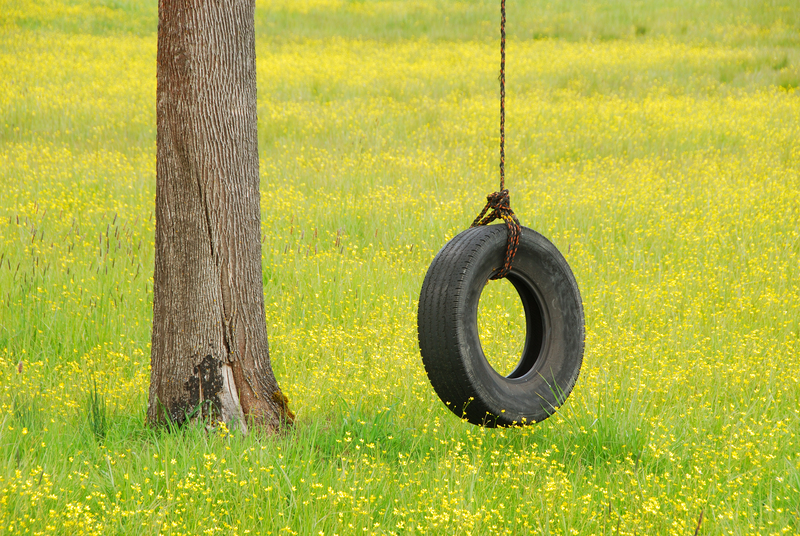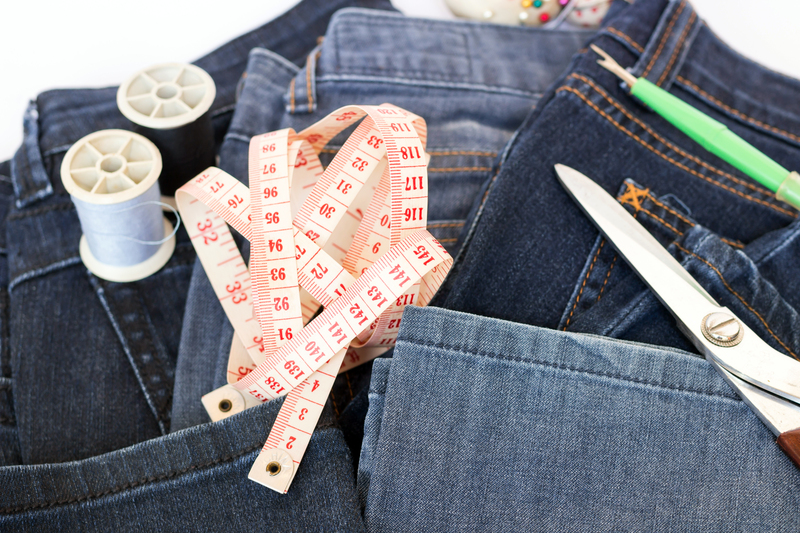Frugal Strategies for Dealing With Bulky Waste Items
Dealing with bulky waste items--such as old furniture, large appliances, mattresses, or yard debris--can be a real headache for households striving to keep costs low and act in an environmentally responsible way. With landfill fees rising and many municipalities restricting what can be left curbside, it's increasingly important to adopt frugal approaches to large waste disposal. This comprehensive guide will cover cost-effective, eco-friendly, and practical strategies for managing bulky waste, ensuring that you not only save money but also help reduce your environmental impact.
Understanding Bulky Waste Items
Before we dive into frugal methods for handling bulky waste, let's clarify what falls into this category. Bulky waste typically includes:
- Furniture (couches, chairs, tables, cabinets)
- Appliances (refrigerators, stoves, washers, dryers)
- Mattresses and bed frames
- Outdoor equipment (old grills, trampolines, swing sets)
- Carpeting and rugs
- Large yard debris (branches, logs, bagged leaves)
This type of waste is notoriously difficult (and sometimes costly) to dispose of, making frugal bulky waste solutions a necessity for mindful homeowners and renters alike.

Why Choose Frugal and Eco-Friendly Options?
Adopting frugal and environmentally sound strategies for disposing of large household items saves you money, reduces landfill burden, and, surprisingly, can even benefit your community. With a little planning, you'll discover that dealing with bulky waste on a budget can also support the circular economy and minimize your ecological footprint.
Key Benefits:
- Cost savings - Avoid disposal and hauling fees.
- Environmental responsibility - Reduce landfill waste and resource consumption.
- Community support - Benefit others by donating or exchanging usable items.
- Creative upcycling - Give new life to old items through repurposing projects.
Reusing and Repurposing Bulky Waste Items
Perhaps the most frugal approach is to seek ways to reuse or repurpose large items rather than disposing of them. With a little imagination (and some elbow grease!), bulky items can often be upcycled for continued use in your home or garden.
Upcycling Old Furniture
- Refinish or repaint wooden furniture to match evolving decor.
- Convert old dressers into storage benches, bathroom vanities, or planters.
- Use doors or tabletops as unique headboards or wall art.
Tip: Search online for DIY upcycling ideas specific to your item--there's a thriving community of crafters offering step-by-step guides.
Repurposing Appliances
- Turn refrigerators or washing machines into outdoor storage cabinets or planters.
- Harvest parts from broken appliances to repair others or for craft projects.
- Donate working appliances to local charities or families in need.
Creative Uses for Mattresses and Bed Frames
- Spring frames can become garden trellises or fencing.
- Use mattress stuffing (cotton, foam) for pet bedding or craft insulation.
- Transform wood frames into shelving or workbenches.
Donation and Community Swap Options
Donating usable bulky items is a win-win: you avoid disposal costs, someone receives an item at little or no cost, and the item is kept out of the landfill.
Where to Donate or Swap Bulky Items
- Thrift Stores and Charities - Many, such as Goodwill or Habitat for Humanity's ReStores, accept large household items in good condition.
- Local Churches or Community Centers - Inquire about their needs or upcoming yard sales.
- Online Platforms - Websites like Freecycle, Facebook Marketplace, Craigslist, or local community groups allow you to list large items for free pickup.
- "Take It or Leave It" Days - Some neighborhoods organize swap days specifically for bulky waste items. This is a great opportunity to give away and pick up needed items.
Pro Tip: Always clean and check items for safety before donating. Take clear photos and provide measurements in listings to find takers more quickly.
Municipal Bulk Waste Collection Programs
Many cities and towns offer budget-friendly bulky waste collection services. Understanding how these programs work can help you access convenient, legally compliant, and economical disposal options.
How to Use Municipal Services for Bulky Waste
- Check eligibility and schedules: Visit your city or county website for details. Some services are free or included in regular trash fees; others require appointments or small payments.
- Follow preparation guidelines: Items may need to be broken down, bundled, or placed at curbside in a prescribed manner.
- Time your pickups: Organize spring cleaning or home projects to coincide with "big item" collection days to avoid extra storage at home.
*Note: Not all types of bulk waste are accepted. Mattresses, electronics, or hazardous items often have special rules. Review your local regulations to avoid fines.
Renting, Borrowing, or Sharing Tools and Vehicles
If you need to disassemble or transport a large item, avoid buying costly equipment by borrowing tools or renting a truck for a few hours. Here's how to approach it in a budget-conscious way:
Frugal Options for Disassembly and Hauling
- Neighborhood Tool Libraries: Many communities maintain tool lending programs for residents.
- Short-term truck rental: Services like U-Haul offer hourly rentals. Compare costs with friends or neighbors and split expenses.
- Ask for Help: Post in local social media groups to find someone who already owns a truck or trailer--offer to buy them lunch for their trouble!
Responsible Recycling of Bulky Waste Items
Recycling large waste items can be very cost-effective--and sometimes profitable--if you know how to disassemble and sort materials. Metals, electronics, and even some plastics are valuable commodities.
Where to Recycle Bulky Items
- Scrap Yards: Accept metal-based items (appliances, bed frames, etc.) and often pay cash for metals.
- Specialized Recycling Facilities: Check with your local waste authority for drop-off locations for electronics, mattresses, and large plastics.
- Retailer Take-Back Programs: Big box stores may haul away old appliances when delivering a replacement. For electronics, stores like Best Buy offer recycling.
Tip: Separate materials before delivery--metal, wood, plastics--to maximize the value and acceptance rate at recycling centers.
Hosting a Garage Sale for Bulky Items
Never underestimate the power of a well-advertised yard or garage sale. Not only can this event offset your disposal costs, but it's also a great way to keep items circulating locally.
Making Your Sale a Success
- Advertise online with photos--social media, Craigslist, Nextdoor.
- List big ticket items (couches, dining sets) with dimensions and condition details.
- Be prepared to negotiate--your main goal is to clear space, not get rich!
- Offer bundle deals (e.g., "Buy the sofa, get the coffee table free").
Creative Alternatives: Community Art and Building Projects
Some bulky waste items can have a second life as materials for community art, theater, or construction projects. Reach out to local makerspaces, theater groups, or schools to see if your item could be put to creative use.
- Theater companies often need vintage furniture and props.
- Sculptors and artists love unusual shapes and materials.
- Community gardens or playgrounds can use large wood pieces, tires, or barrels.
*Not only is this a green solution, it also fosters community connections and local creativity.
DIY Disassembly for Cheaper Disposal
If donation, reuse, or recycling isn't an option--and your municipality charges by item or weight--breaking down large items can save money and create space.
How to Break Down Bulky Waste Yourself
- Disassemble furniture with basic hand tools; keep screws and hinges for future DIY projects.
- Cut up wood and metal to fit into standard garbage bins or recycling containers (follow local size limits).
- Remove metal parts for separate scrap yard drop-off--often the metal compensates for landfill costs.
Safety Tip: Always wear gloves, goggles, and appropriate safety gear when taking apart large items. Avoid items with hazardous materials or insulation without proper knowledge.
Frugal Tips for Bulk Waste Management
- Plan ahead: Schedule annual cleanouts to coincide with community pickups to avoid last-minute fees.
- Store properly: Keep items dry and sheltered if waiting for the next disposal or collection date.
- Reduce at the source: Choose smaller, modular furniture and appliances that are easier to move, sell, or donate in the future.
- Partner up: Organize group disposal with neighbors to share hauling costs or attract bulk collection discounts.
- Document depreciation: For rental properties, photograph and record big items as they wear out--this helps with insurance or tax deductions when disposing.

What NOT to Do When Disposing Bulky Waste
Frugal strategies shouldn't cross the line into unsafe or illegal territory. Avoid the following:
- Dumping items illegally on public or private land.
- Leaving items at curbside without checking local ordinances.
- Burning materials like mattresses, plastics, or treated wood, which emit toxins.
- Ignoring hazardous components like refrigerants in old air conditioners or lead paint in vintage items.
Instead, always follow regulations and choose environmentally sound, legal solutions.
Summary: Dealing With Bulky Waste Without Breaking the Bank
Handling large unwanted items doesn't have to be expensive or harmful to the environment. By embracing frugal bulky waste removal tactics--including reuse, donation, recycling, community engagement, and DIY methods--you can turn a daunting task into an opportunity to save money and make a positive impact in your neighborhood. Remember to research local resources, participate in community events, and use every resource at your disposal for practical, eco-friendly bulky waste management.
Start planning today and transform your bulky waste challenge into a story of sustainable, budget-savvy living!